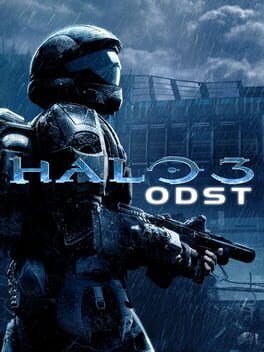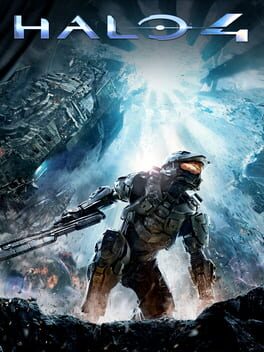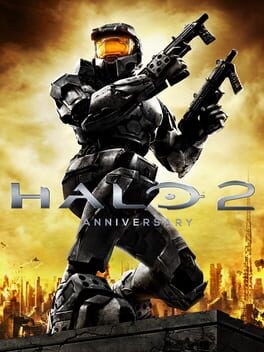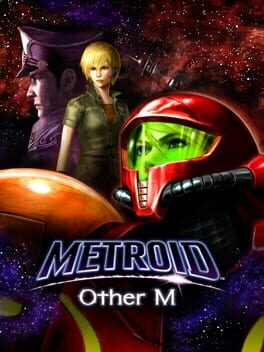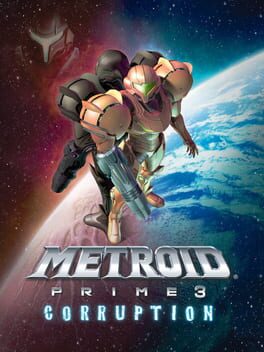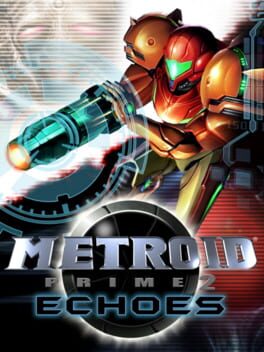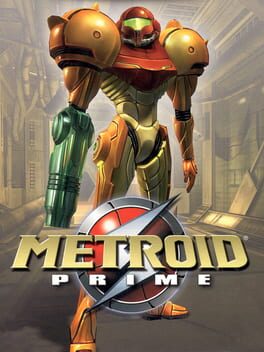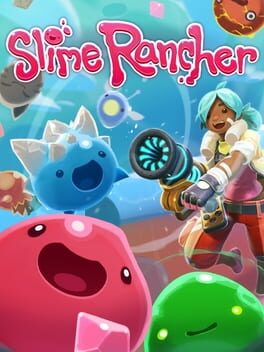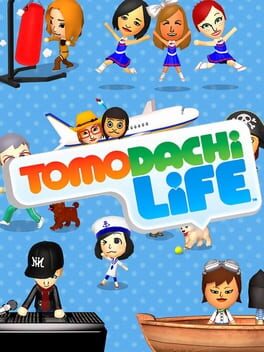Memequester
Incredibly captivating and compelling, with challenge and atmosphere to boot. While it was a little too tight-lipped about its own mechanics for my liking - spells, the shield rod, gravity boots, damage types - there's absolutely no doubting the influence that Symphony of the Night has had on the Metroidvania genre. I'll never look at Hollow Knight or Pseudoregalia in quite the same way again!
2009
I love ODST. Fascinatingly and uniquely presented, with distinctive characters that embody the B-team vibe perfectly. New Mombasa is dark and oppressive in a way seldom seen in Halo - while definitely limited by the engine at the time, the experience on PC with an SSD is much truer to what was imagined, and makes New Mombasa really feel like a small open world.
2012
2014
2010
2010
Buried under the cutscenes, the embarrassing & sexist recharacterisation of Samus, the controls and perspective, the horrible artificial progression... underneath it all, believe it or not, is a decent Metroid game. But to get to it, you have to dig.
Let's get it out of the way - the cutscenes suck. They're long, with little substance. Samus' voiceover is flat, yet also absent-minded and dreamy, as if the VA was talking in their sleep. And she's short now. 0/10 bad game. These are just a few of the changes that, in accordance with the woeful script, recharacterise Samus as a helpless and naïve child in need of authority. It's completely nonsensical.
But, when the narrative gets out of the game's way, things are a little better. Other M wants you to feel like a ninja, not a tank, and when you learn to play along, it can feel great. Can. Regular enemies hit pretty hard, since the game expects you to be using 'Sensemove' to dodge attacks and 'Overblast' to kill enemies quickly - good luck trying to play the game without these, because you'll be heavily punished for running/jumping away from attacks and you'll run out of missiles pretty quick. But, when you start using these, it's pretty hard to stop, since they're pretty overpowered. Spamming directions on the d-pad will make you nearly invulnerable in most combat situations.
Another issue that myself and most others had with the game was the artificial progression. Samus' abilities aren't discovered or augmented during the game, but are instead authorised for use by Adam - or worse, they're completely arbitrarily enabled for a setpiece sequence. Most will point to the Varia Suit cutscene, which is plenty ridiculous already, but I think the most egregious case is the fact that the Gravity Suit is clearly accessible to Samus for the whole game, but she doesn't use it until a setpiece very late in the game (after, by the way, multiple rooms of water that made her immobile and the boss fight against gravity-warping Nightmare).
Metroid gets shtick for how Samus starts every mission with nothing, but Other M pushes this to the extreme, and it really hurts the experience. That said, I'm not sure how else they could've worked in this facet of Metroidvania design - perhaps by taking inspiration from Prime 3 and leaning into the laboratory aspect of the Bottle Ship to frame Samus' upgrades as Federation Army tech created by studying the creatures in the ship's habitats?
All of this bad added up, and I nearly left the game to gather dust. But, I stuck with it, and over the course of the last 30-40% of the game, it somehow redeemed itself. The high point of my playthrough was the fight against Nightmare.
I'm a huge fan of Metroid Fusion, and I love the buildup to the Nightmare fight in that game (at the time, its first appearance) and, to an extent, the fight itself (even if it's a little phoned in). But - and I didn't think I'd be saying this - Other M beats this hands-down, and it's honestly one of the standout sequences & fights in the 3D Metroid series as a whole. The buildup consists of platforming and fighting enemies while gravity flips and warps from room to room, and the fight itself is frantic and dynamic, requiring you to repeatedly freeze Nightmare's gravity manipulator and then pummel its faceplate with missiles Fusion-style, all while Sensemove-dodging attacks and jumping out of the way when it goes on the offensive to sweep you off the platforms. Finally, you whittle its healthbar down and cause its gravity manipulator to malfunction, which smashes the monstrosity against the walls of the arena before it crashes to the ground, destroying its faceplate and revealing the six-eyed creature encased within... a hard-won victory.
...Until 20 minutes later, whereupon backtracking through this room, Nightmare's corpse is absent... until it descends upon you once again as you try to leave, more violent than ever. It goes down easier this time, but it puts up even more of a fight, creating gravity wells that linger in the arena and misdirect your missiles even after freezing its gravity manipulator. What a fight.
The rest of the game up to the credits was a little up and down - the final boss in particular is quite underwhelming. It's a somewhat disappointing end, but then: an epilogue! You're set free on the Bottle Ship once more, with all your abilties to boot. You're back here to retrieve Adam's helmet, but to get there, you have to reveal new paths through the ship using power bombs (finally...) and battling the ferocious Desbrachians that reveal themselves upon detonation. These enemies will put your Sensemove skills to the test, and you'll need to Overblast them at the right time to finish them off. Working my way through the station and collecting the items I missed was honestly quite fun with all my abilities.
And then, one final bonus boss: Phantoon. This one's definitely more of a setpiece than a challenge, especially if you have all the items, but it's amazing nonetheless. And, to top it all off, what we've all been waiting for: a classic Metroid countdown sequence to escape the ship.
What a rollercoaster. Other M started pretty poorly, and took a while to get up to reasonable speed. Had the game ended halfway through, I'd have rated it a 2/5, maybe a 2.5/5 if I was being nice. But the latter half felt like a Metroid game, and significantly redeemed the game. Honestly? I'll probably play it again someday!
Let's get it out of the way - the cutscenes suck. They're long, with little substance. Samus' voiceover is flat, yet also absent-minded and dreamy, as if the VA was talking in their sleep. And she's short now. 0/10 bad game. These are just a few of the changes that, in accordance with the woeful script, recharacterise Samus as a helpless and naïve child in need of authority. It's completely nonsensical.
But, when the narrative gets out of the game's way, things are a little better. Other M wants you to feel like a ninja, not a tank, and when you learn to play along, it can feel great. Can. Regular enemies hit pretty hard, since the game expects you to be using 'Sensemove' to dodge attacks and 'Overblast' to kill enemies quickly - good luck trying to play the game without these, because you'll be heavily punished for running/jumping away from attacks and you'll run out of missiles pretty quick. But, when you start using these, it's pretty hard to stop, since they're pretty overpowered. Spamming directions on the d-pad will make you nearly invulnerable in most combat situations.
Another issue that myself and most others had with the game was the artificial progression. Samus' abilities aren't discovered or augmented during the game, but are instead authorised for use by Adam - or worse, they're completely arbitrarily enabled for a setpiece sequence. Most will point to the Varia Suit cutscene, which is plenty ridiculous already, but I think the most egregious case is the fact that the Gravity Suit is clearly accessible to Samus for the whole game, but she doesn't use it until a setpiece very late in the game (after, by the way, multiple rooms of water that made her immobile and the boss fight against gravity-warping Nightmare).
Metroid gets shtick for how Samus starts every mission with nothing, but Other M pushes this to the extreme, and it really hurts the experience. That said, I'm not sure how else they could've worked in this facet of Metroidvania design - perhaps by taking inspiration from Prime 3 and leaning into the laboratory aspect of the Bottle Ship to frame Samus' upgrades as Federation Army tech created by studying the creatures in the ship's habitats?
All of this bad added up, and I nearly left the game to gather dust. But, I stuck with it, and over the course of the last 30-40% of the game, it somehow redeemed itself. The high point of my playthrough was the fight against Nightmare.
I'm a huge fan of Metroid Fusion, and I love the buildup to the Nightmare fight in that game (at the time, its first appearance) and, to an extent, the fight itself (even if it's a little phoned in). But - and I didn't think I'd be saying this - Other M beats this hands-down, and it's honestly one of the standout sequences & fights in the 3D Metroid series as a whole. The buildup consists of platforming and fighting enemies while gravity flips and warps from room to room, and the fight itself is frantic and dynamic, requiring you to repeatedly freeze Nightmare's gravity manipulator and then pummel its faceplate with missiles Fusion-style, all while Sensemove-dodging attacks and jumping out of the way when it goes on the offensive to sweep you off the platforms. Finally, you whittle its healthbar down and cause its gravity manipulator to malfunction, which smashes the monstrosity against the walls of the arena before it crashes to the ground, destroying its faceplate and revealing the six-eyed creature encased within... a hard-won victory.
...Until 20 minutes later, whereupon backtracking through this room, Nightmare's corpse is absent... until it descends upon you once again as you try to leave, more violent than ever. It goes down easier this time, but it puts up even more of a fight, creating gravity wells that linger in the arena and misdirect your missiles even after freezing its gravity manipulator. What a fight.
The rest of the game up to the credits was a little up and down - the final boss in particular is quite underwhelming. It's a somewhat disappointing end, but then: an epilogue! You're set free on the Bottle Ship once more, with all your abilties to boot. You're back here to retrieve Adam's helmet, but to get there, you have to reveal new paths through the ship using power bombs (finally...) and battling the ferocious Desbrachians that reveal themselves upon detonation. These enemies will put your Sensemove skills to the test, and you'll need to Overblast them at the right time to finish them off. Working my way through the station and collecting the items I missed was honestly quite fun with all my abilities.
And then, one final bonus boss: Phantoon. This one's definitely more of a setpiece than a challenge, especially if you have all the items, but it's amazing nonetheless. And, to top it all off, what we've all been waiting for: a classic Metroid countdown sequence to escape the ship.
What a rollercoaster. Other M started pretty poorly, and took a while to get up to reasonable speed. Had the game ended halfway through, I'd have rated it a 2/5, maybe a 2.5/5 if I was being nice. But the latter half felt like a Metroid game, and significantly redeemed the game. Honestly? I'll probably play it again someday!
2023
Pseudoregalia is a refreshing take on the Metroidvania genre. It's got excellent movement, classic lock-and-key progression, and a uniquely strange atmosphere to its world - at times it felt like I was wandering through a forgotten indie horror game.
Sybil (my beloved) can gather a wide array of abilities over the course of the game, but most of these are movement-oriented. This leaves the combat feeling very underdeveloped - many fights are won by just circling your enemies and spamming the basic attack or charging for heavy attacks, assuming you're even in combat long enough to need such a strategy. The game's boss fights are similarly simple, with no health bars or indicators of any kind, and no phase variety as far as I could tell. All that said, I still found the combat satisfying.
All-in-all, I really enjoyed Pseudoregalia, and I'd quite like to have a go making my own spiritual successor!
Sybil (my beloved) can gather a wide array of abilities over the course of the game, but most of these are movement-oriented. This leaves the combat feeling very underdeveloped - many fights are won by just circling your enemies and spamming the basic attack or charging for heavy attacks, assuming you're even in combat long enough to need such a strategy. The game's boss fights are similarly simple, with no health bars or indicators of any kind, and no phase variety as far as I could tell. All that said, I still found the combat satisfying.
All-in-all, I really enjoyed Pseudoregalia, and I'd quite like to have a go making my own spiritual successor!
1 and 2 were already great, so things should only get better for 3, right?
Prime 3 is paradoxically the best and worst of the series. It found a way to frustrate me at nearly every turn, but it still fixes some things that the other two Prime games struggled with.
First, some good. While I really liked beam combos and the various beam effects in the previous games, Prime 3 really doesn't lose out on much by simplifying the system to a more 2D-esque standard. Power Beam -> Plasma Beam -> Nova Beam is a nice progression (though this is made slightly more complicated by Hypermode... we'll get to that) and the Ice Missiles borrowed from Fusion are nice - when they work.
Prime 3 doesn't break much new ground in terms of environment design, other than the stunning (albeit somewhat samey) SkyTown and perhaps Phaaze (you like blue?). Bryyo has some neat variation, condensing Tallon IV into a few decently interconnected areas. The Pirate Homeworld is also quite striking, though not as much as Sanctuary Fortress. Sanctuary Fortress also doesn't have an escort mission in it...
The game's small cast of Hunters is a welcome addition, though they don't nearly get enough screen time. Justice for Rundas.
One of the best changes made is the addition of the Chozo Observatory. 100% completing the previous two games is quite tedious, because there's no record of which rooms have collectibles, nor which rooms have had their collectibles picked up. Prime 3 not only lets you bookmark rooms to track this kind of thing, but the Observatory later reveals the locations and collection status of every collectible in every area of the game (as long as you've beaten or at least advanced quite far in that area). The previous games would've greatly benefited from this - if a similar system was available in all three games, then I'd have 100% completed them all.
And now, the bad. Let's cut to the chase: Hypermode. Hypermode is a truly bizarre addition to Prime 3. It's interesting narratively - Samus is quite literally corrupted by power, and using Phazon turns her into an unparalleled killing machine. But the ramifications for gameplay are dire. Hypermode consumes energy, up to a full tank if you run out the timer, so to facilitate using Hypermode, Prime 3 throws several energy tanks at you within the first couple of hours of playing. This neuters the difficulty, so what does the game do? It bumps up the health of every enemy, making non-Hypermode combat drag on; and it allows some enemies to enter Hypermode themselves, which pretty much forces you to enter Hypermode yourself if you hadn’t already.
The result? Combat encounters go one of two ways: you can either try to play the game like its predecessors, using your movement abilities to dodge enemies while chipping away at their health with your beams (or slowly putting missiles into them until they freeze, assuming that they even can freeze); or you can go into Hypermode and kill them in a few shots or with a Hyper Missile or two. You’ll probably lose the same amount of energy either way.
Most of Prime 3’s bosses are no more complex or interesting or challenging than Thardus from Prime 1, which is pretty disappointing. Most are simple “wait until I’m not invulnerable anymore, enter Hypermode and shoot me for a bit” affairs, while others are just bullet sponges. The best they really get is Ghor, who works a little like the Quad enemies in Prime 2; and Omega Ridley, who has decent phase variety and utilises the X-Ray visor in a cool way, but I’m really scraping the barrel here. It also doesn’t help that three of the fights take place in the nearly-identical Leviathan Seed boss arenas and two more take place within Phaaze (did somebody order blue?).
That was a lot. But there's more!
Ping-ponging is back, with extra obnoxiousness. Getting a message from Aurora-242 to straight-up tell you that you need to go to a different planet is ridiculous, but what makes it worse is that there are already solutions to this problem, some of which are even used within the game! Some of these hints (or directions, if we're being honest here) are presented more diegetically, like how "go to [x] room on the Pirate Homeworld" is framed as a call from Admiral Dane asking you to meet up with him and a squad of Federation troops - if the Federation are going to be made so prevalent, then why not frame the hints as points of interest discovered by the Federation exploring these planets?
Motion controls... motion controls. One step forward, two steps back. Motion aiming is great, a welcome change from the tank controls of the first two games; but the lack of direct camera control makes traversal almost more clunky. And then there are the motion sequences and the waggling. Shake controllers to break free from things. Twist the controller to remove battery cells. Pump the controller to make stuff work on Bryyo. Mime pulling a lever with the controller to make the trams run on Pirate Homeworld. Pull the nunchuk to move debris and expose boss weakpoints. I just goes on and on and on... the "this was meant to be a Wii launch title" influence is very visible.
...I think that's it. For all the complaining I've done, I honestly did still enjoy my time with Prime 3. I like the ideas it has, and I'm glad it improved on a few issues in its two predecessors. But makes a heap of mistakes in the process. If I ever revisit this trilogy, I'm not sure I'll do a full trilogy playthrough... yikes.
Prime 3 is paradoxically the best and worst of the series. It found a way to frustrate me at nearly every turn, but it still fixes some things that the other two Prime games struggled with.
First, some good. While I really liked beam combos and the various beam effects in the previous games, Prime 3 really doesn't lose out on much by simplifying the system to a more 2D-esque standard. Power Beam -> Plasma Beam -> Nova Beam is a nice progression (though this is made slightly more complicated by Hypermode... we'll get to that) and the Ice Missiles borrowed from Fusion are nice - when they work.
Prime 3 doesn't break much new ground in terms of environment design, other than the stunning (albeit somewhat samey) SkyTown and perhaps Phaaze (you like blue?). Bryyo has some neat variation, condensing Tallon IV into a few decently interconnected areas. The Pirate Homeworld is also quite striking, though not as much as Sanctuary Fortress. Sanctuary Fortress also doesn't have an escort mission in it...
The game's small cast of Hunters is a welcome addition, though they don't nearly get enough screen time. Justice for Rundas.
One of the best changes made is the addition of the Chozo Observatory. 100% completing the previous two games is quite tedious, because there's no record of which rooms have collectibles, nor which rooms have had their collectibles picked up. Prime 3 not only lets you bookmark rooms to track this kind of thing, but the Observatory later reveals the locations and collection status of every collectible in every area of the game (as long as you've beaten or at least advanced quite far in that area). The previous games would've greatly benefited from this - if a similar system was available in all three games, then I'd have 100% completed them all.
And now, the bad. Let's cut to the chase: Hypermode. Hypermode is a truly bizarre addition to Prime 3. It's interesting narratively - Samus is quite literally corrupted by power, and using Phazon turns her into an unparalleled killing machine. But the ramifications for gameplay are dire. Hypermode consumes energy, up to a full tank if you run out the timer, so to facilitate using Hypermode, Prime 3 throws several energy tanks at you within the first couple of hours of playing. This neuters the difficulty, so what does the game do? It bumps up the health of every enemy, making non-Hypermode combat drag on; and it allows some enemies to enter Hypermode themselves, which pretty much forces you to enter Hypermode yourself if you hadn’t already.
The result? Combat encounters go one of two ways: you can either try to play the game like its predecessors, using your movement abilities to dodge enemies while chipping away at their health with your beams (or slowly putting missiles into them until they freeze, assuming that they even can freeze); or you can go into Hypermode and kill them in a few shots or with a Hyper Missile or two. You’ll probably lose the same amount of energy either way.
Most of Prime 3’s bosses are no more complex or interesting or challenging than Thardus from Prime 1, which is pretty disappointing. Most are simple “wait until I’m not invulnerable anymore, enter Hypermode and shoot me for a bit” affairs, while others are just bullet sponges. The best they really get is Ghor, who works a little like the Quad enemies in Prime 2; and Omega Ridley, who has decent phase variety and utilises the X-Ray visor in a cool way, but I’m really scraping the barrel here. It also doesn’t help that three of the fights take place in the nearly-identical Leviathan Seed boss arenas and two more take place within Phaaze (did somebody order blue?).
That was a lot. But there's more!
Ping-ponging is back, with extra obnoxiousness. Getting a message from Aurora-242 to straight-up tell you that you need to go to a different planet is ridiculous, but what makes it worse is that there are already solutions to this problem, some of which are even used within the game! Some of these hints (or directions, if we're being honest here) are presented more diegetically, like how "go to [x] room on the Pirate Homeworld" is framed as a call from Admiral Dane asking you to meet up with him and a squad of Federation troops - if the Federation are going to be made so prevalent, then why not frame the hints as points of interest discovered by the Federation exploring these planets?
Motion controls... motion controls. One step forward, two steps back. Motion aiming is great, a welcome change from the tank controls of the first two games; but the lack of direct camera control makes traversal almost more clunky. And then there are the motion sequences and the waggling. Shake controllers to break free from things. Twist the controller to remove battery cells. Pump the controller to make stuff work on Bryyo. Mime pulling a lever with the controller to make the trams run on Pirate Homeworld. Pull the nunchuk to move debris and expose boss weakpoints. I just goes on and on and on... the "this was meant to be a Wii launch title" influence is very visible.
...I think that's it. For all the complaining I've done, I honestly did still enjoy my time with Prime 3. I like the ideas it has, and I'm glad it improved on a few issues in its two predecessors. But makes a heap of mistakes in the process. If I ever revisit this trilogy, I'm not sure I'll do a full trilogy playthrough... yikes.
Prime 2 improves on nearly every problem I had with the original... but not without cost.
Once again, the environment design is stellar; every area is atmospheric and well realised, from the dank and mossy Torvus Bog, to the arid, pirate-infested Agon Wastes, to the dusty sprawling web of the Temple Grounds, and topped off by the incredibly striking Sanctuary Fortress.
The world design and structure is, in my opinion, a major improvement over its predecessor. Every area makes effective use of loops and branches to cut down the time spent backtracking, without significantly reducing world size. Prime 2 also doesn't ask you do remember all four areas (and their Dark counterparts) at the same time; progression within an area is mostly restricted to that area (aside from the Seeker Missiles and Power Bomb, an unfortunate callback to Prime 1's ping-ponging). Finding the area's Temple Keys within an area is a great non-linear exploration challenge too, and the interconnectedness of the whole world... ungh. Prime 2 utterly spoils Prime 1 in that regard, to the extent that I would honestly consider making a cheat code or a mod that makes Prime 1 as seamless to traverse.
But alas, not all was fixed. Smaller things first: boss design is generally improved, but it's a higher highs & lower lows situation. Quadraxis is the go-to, and potentially the best and most interesting boss in the whole Prime trilogy, making use of a wide array of upgrades. But on the other hand... Chykka, Grapple Guardian, Emperor Ing... what went wrong in playtesting? Who wasn't bored to tears by these bosses?
Next, the Dark world. I like this concept and I think from an exploration point of view, it's fairly well realised. The radiation damage makes the early game feel very oppressive, instilling a fear of the Dark that will stick with you even after you become resistent and then immune to the damage entirely. But, in the end... it's not really utilised much. Puzzles that are "split between dimensions" are really just "what is the fastest/easiest way to get to the opposite dimension" challenges. I think this could've been explored more if Prime 2 wasn't afraid to make you remember part of a puzzle solution, or if the Gamecube was capable of switching between Light and Dark much more quickly.
And now... the Sky Temple Key hunt. These MacGuffins are scattered around the whole world, and the kicker is that even if you know where they are (there are Keybearer corpses that mark their locations), you can't pick any of them up until you have the Dark Visor, which you get from Chykka. Thanks Chykka. Even then, only 3 of the 9 are available at this point; 1 of 9 is gated behind Power Bombs and the last 5 are locked behind the final upgrade.
Now, in all fairness, this MacGuffin hunt wasn't as painful as it initially seemed it would be. 9 is nicer than 12, and backtracking to get them is only moderately tedious thanks to the fairly gratuitous hints (again, Keybearer corpses are in the Light equivalents of the Dark room that the key will be in, and you can get hints for all the keybearer's locations in the Seeker Missiles room). But it plus the bland Emperor Ing fight meant Prime 2 trailed off a tad unceremoniously for me. Thank goodness the surprise Dark Samus boss was straightforward and decent.
All in all, I think Prime 2 was both a good game and a good sequel, fixing many issues with the series' first entry whilst also standing on its own.
Once again, the environment design is stellar; every area is atmospheric and well realised, from the dank and mossy Torvus Bog, to the arid, pirate-infested Agon Wastes, to the dusty sprawling web of the Temple Grounds, and topped off by the incredibly striking Sanctuary Fortress.
The world design and structure is, in my opinion, a major improvement over its predecessor. Every area makes effective use of loops and branches to cut down the time spent backtracking, without significantly reducing world size. Prime 2 also doesn't ask you do remember all four areas (and their Dark counterparts) at the same time; progression within an area is mostly restricted to that area (aside from the Seeker Missiles and Power Bomb, an unfortunate callback to Prime 1's ping-ponging). Finding the area's Temple Keys within an area is a great non-linear exploration challenge too, and the interconnectedness of the whole world... ungh. Prime 2 utterly spoils Prime 1 in that regard, to the extent that I would honestly consider making a cheat code or a mod that makes Prime 1 as seamless to traverse.
But alas, not all was fixed. Smaller things first: boss design is generally improved, but it's a higher highs & lower lows situation. Quadraxis is the go-to, and potentially the best and most interesting boss in the whole Prime trilogy, making use of a wide array of upgrades. But on the other hand... Chykka, Grapple Guardian, Emperor Ing... what went wrong in playtesting? Who wasn't bored to tears by these bosses?
Next, the Dark world. I like this concept and I think from an exploration point of view, it's fairly well realised. The radiation damage makes the early game feel very oppressive, instilling a fear of the Dark that will stick with you even after you become resistent and then immune to the damage entirely. But, in the end... it's not really utilised much. Puzzles that are "split between dimensions" are really just "what is the fastest/easiest way to get to the opposite dimension" challenges. I think this could've been explored more if Prime 2 wasn't afraid to make you remember part of a puzzle solution, or if the Gamecube was capable of switching between Light and Dark much more quickly.
And now... the Sky Temple Key hunt. These MacGuffins are scattered around the whole world, and the kicker is that even if you know where they are (there are Keybearer corpses that mark their locations), you can't pick any of them up until you have the Dark Visor, which you get from Chykka. Thanks Chykka. Even then, only 3 of the 9 are available at this point; 1 of 9 is gated behind Power Bombs and the last 5 are locked behind the final upgrade.
Now, in all fairness, this MacGuffin hunt wasn't as painful as it initially seemed it would be. 9 is nicer than 12, and backtracking to get them is only moderately tedious thanks to the fairly gratuitous hints (again, Keybearer corpses are in the Light equivalents of the Dark room that the key will be in, and you can get hints for all the keybearer's locations in the Seeker Missiles room). But it plus the bland Emperor Ing fight meant Prime 2 trailed off a tad unceremoniously for me. Thank goodness the surprise Dark Samus boss was straightforward and decent.
All in all, I think Prime 2 was both a good game and a good sequel, fixing many issues with the series' first entry whilst also standing on its own.
2002
Prime is an all-round amazing first release from Retro Studios. The environment design and art is stunning, Kenji Yamamoto's music is excellent, and Prime nails the trademark atmosphere of a good Metroid entry. While obviously a late example, I can't think of another franchise that made the jump to 3D this elegantly.
But, it's not without problems. Most will talk about the Artifact hunt, the first of the Prime series' unwelcome Macguffin hunts, but honestly it wasn't too bad; I found most Artifacts on my travels just through dogged exploration, but I did have prior knowledge of some Artifact locations.
What bothered me more was the world structure. You'll have the Magmoor Caverns theme burned into your brain before you're even halfway through the game, since you'll be retracing your steps several times, and that's assuming you play the game completely optimally. Why does Norfair 2: Electric Boogaloo have one upgrade in it?
Prime ping-pongs you from area to area constantly, so a lot of your time is spent retracing your steps - and not in typical Metroidvania fashion, where branching and looping designs keep things relatively close together. No, Prime will often make you walk through the same corridors over and over and over, perhaps with a few missile expansions along the way.
Another gripe is the boss design. Thardus and Meta Ridley are both boring slogs, and in general bosses tend to be tests of patience rather than accuracy, strategy or skill.
But, despite all this, Prime still hooked me in and kept me playing. It's the one I'm most likely to replay; perhaps I'll improve on my 77%, or cut down on a lot of that backtracking to go for a faster time.
But, it's not without problems. Most will talk about the Artifact hunt, the first of the Prime series' unwelcome Macguffin hunts, but honestly it wasn't too bad; I found most Artifacts on my travels just through dogged exploration, but I did have prior knowledge of some Artifact locations.
What bothered me more was the world structure. You'll have the Magmoor Caverns theme burned into your brain before you're even halfway through the game, since you'll be retracing your steps several times, and that's assuming you play the game completely optimally. Why does Norfair 2: Electric Boogaloo have one upgrade in it?
Prime ping-pongs you from area to area constantly, so a lot of your time is spent retracing your steps - and not in typical Metroidvania fashion, where branching and looping designs keep things relatively close together. No, Prime will often make you walk through the same corridors over and over and over, perhaps with a few missile expansions along the way.
Another gripe is the boss design. Thardus and Meta Ridley are both boring slogs, and in general bosses tend to be tests of patience rather than accuracy, strategy or skill.
But, despite all this, Prime still hooked me in and kept me playing. It's the one I'm most likely to replay; perhaps I'll improve on my 77%, or cut down on a lot of that backtracking to go for a faster time.
2019
This review contains spoilers
Oh, where to begin...
Death Stranding is a deeply satisfying game to play. From start to finish (kind of), your ability to plan in the short-term and long-term, carry out deliveries in varied and harsh conditions, and collaborate with other players will be thorougly tested throughout; and by the end, you'll truly feel like part of a community of accomplished porters.
But... Death Stranding is also a Kojima game. The plot is quite frankly batshit, and it's not afraid to break typical storytelling conventions to tell you its story. That is to say, you're not going to have a clue what's actually going on until the third act, and you're not going to get any closure until the epilogue after two unskippable credits sequences.
Despite that, I really did enjoy my first 50-60 hours of my playthrough. I think my opinion of the game would be higher if the game ended after the second act, or if the third act wasn't such a curveball in terms of gameplay, but Kojima's gonna Kojima.
Death Stranding is a deeply satisfying game to play. From start to finish (kind of), your ability to plan in the short-term and long-term, carry out deliveries in varied and harsh conditions, and collaborate with other players will be thorougly tested throughout; and by the end, you'll truly feel like part of a community of accomplished porters.
But... Death Stranding is also a Kojima game. The plot is quite frankly batshit, and it's not afraid to break typical storytelling conventions to tell you its story. That is to say, you're not going to have a clue what's actually going on until the third act, and you're not going to get any closure until the epilogue after two unskippable credits sequences.
Despite that, I really did enjoy my first 50-60 hours of my playthrough. I think my opinion of the game would be higher if the game ended after the second act, or if the third act wasn't such a curveball in terms of gameplay, but Kojima's gonna Kojima.
2002
2016
2013

